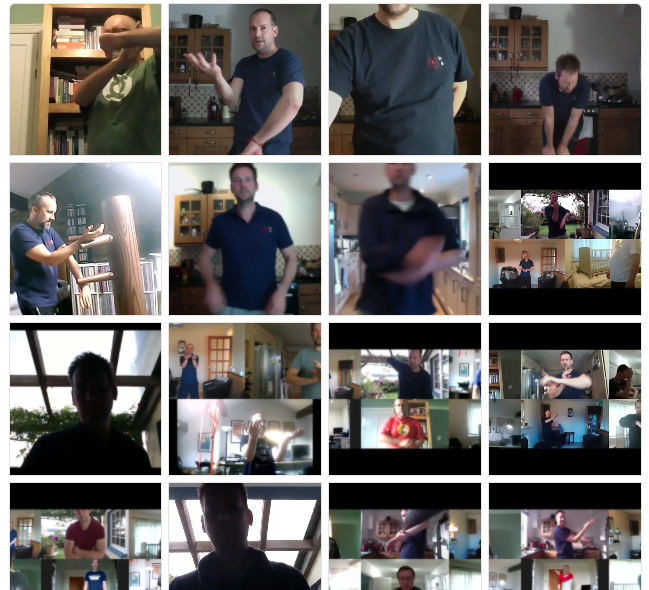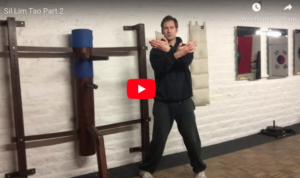One of the best Wing Chun drills at home is your first form. The first form teaches the entire Wing Chun system (in theory) and can be learned wherever you are. Access FREE videos here and learn the first hand pattern of the Wing Chun system.
Once you’ve learned the basic movements of Siu Lim Tao (first form), you can move on to more advanced forms and drills. If you have someone to train with at home, or a Wing Chun Wooden Dummy to train on, you can learn more complex drills, which I will share later in this article.
Wing Chun Drills At Home – Siu Lim Tao
Siu Lim Tao is usually the first step of learning the system of Wing Chun. If you are learning a musical instrument, you’ll start by learning your scales. You can consider the first form as your Wing Chun scales. Before you can learn to perform a set piece, or “freestyle” it, you’ll need to learn the basic movements.
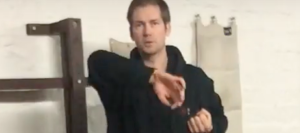
That’s what Siu Lim Tao teaches you! So start here to access a daily video series to learn the form. See also Wing Chun First Form Step By Step.
Wing Chun Drills At Home – Partner Training
Many of Wing Chun’s drills involve working with a partner. If you don’t have someone to train with at home, the next best thing is to buy yourself a wooden dummy. This can give you some arms to train with and give you some “feedback” when you hit the dummy, or pull or push against the arms. Without a dummy, or a training partner, it’s impossible to learn the more complex partner drills because they involve reacting to your partners moves, and vice versa.
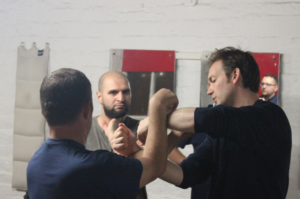
Ideally find a local class which will give you more personal instruction and a bunch of training partners. You can then continue your Wing Chun drills at home, if you can persuade another student to come and train with you! For the purposes of this article, I’m going to stick with drills you can do alone, since this is much more straight forward, when learning wing chun drills at home by yourself.
Wing Chun Drills At Home – Extracting Drills From The First Form
The first form has a number of moves in it which you can use to drill independently of the complete form. Study the form and learn the theory too to fully understand it. (See Wing Chun First Form Step By Step). One of the best drills you can take from the first form are the punches.
Yat Chi Kuen – Single Thrusting Punch
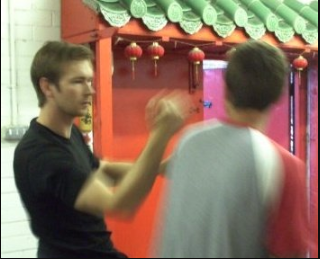
The punches are the first and last things that appear in the first form (bar the centreline check at the very beginning). Even though the punches are a very straight forward (no pun intended) move, they function in more ways than one in the Wing Chun system.
Not only are you training a forward punch, (which could also be a block), you are retracting the back hand to either re-load for more attacks or to retreat and avoid being trapped. The retreating hand also acts to counterbalance the advancing hand too, so you are not over-reaching, or out of balance.
The single thrusting punch is relaxed throughout the move, except at the final inch of the technique, where you “explode” energy. Then, you should relax it again. Force and power is generated through the explosion of energy and speed is generated through the relaxed movement of the arm before this happens. If you maintain a tense arm throughout, you’ll be inhibiting the movement of the arm. Plus, you can’t explode energy if you are already tense.
Basic Punching Exercise
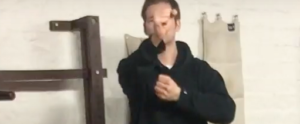
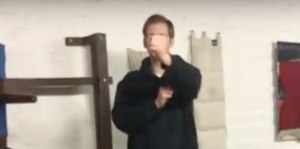
Start by placing your back hand position about a fist distance from your chest and your front hand out in front. Both fists should be vertical and your front punching arm shouldn’t be fully locked out. Drop the front hand to make space for the back hand to punch through.
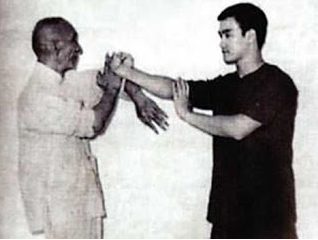
Punch through with the back hand avoiding locking the arm completely. Draw the other hand back to the back hand position.
Arm Movement – Ellipse Shape
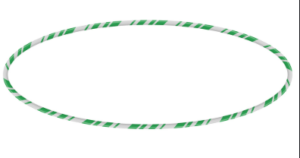
From the side point of view, the arms should be forming an ellipse shape, rather than a circle while punching. Although the top of the ellipse should be a straight line, rather than a curve. Keep the elbows in and punch with a vertical fist, hitting with the bottom three knuckles.
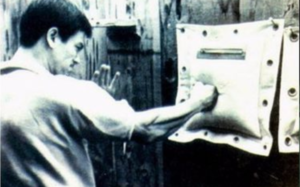
Chain Punching And Wall Bag Training
If you can get a wall bag, it’s a great piece of kit to practice punches with. A mirror is another piece of training equipment you can use to perfect your technique too.
To train chain punches, try throwing three punches in a row, then 5, then 7. You can train punches in singles, with explosive energy on the end, or in sets without using energy. To train speed, just remove the use of explosive energy at the end of the punch.

